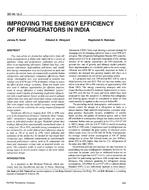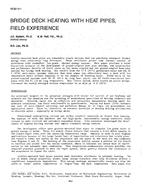The objective of this research project was to quantify the impact that appliance position and/or the mix of appliances under an exhaust hood had on the minimum exhaust airflow required to ensure capture and containment. Appliances typically found in a commercial kitchen (providing cooking operations for broiled meats, fried products, and baked goods) were used for the testing. These appliances included gas under-fired broilers in the heavy-duty category, double-vat gas fryers in the medium-duty category, and electric full-size convection ovens in the light-duty category. The appliances were operated in various combinations, with one, two or three appliances being used in a full-load cooking condition while the others were maintained in a ready-to-cook (idle) condition. In some cases during the like-duty appliance testing, one or two appliances were in a “turned off†condition. For all tests, the equipment was installed under a 10- foot long by 4-foot deep, wall-mounted canopy hood. The laboratory tests, performed in accordance with ASTM 1704-99 Standard Test Method for Performance of Commercial Kitchen Ventilation Systems, documented the effects of appliance diversity and position on exhaust hood performance.
Units: Dual
Product Details
- Published:
- 2005
- Number of Pages:
- 140
- File Size:
- 1 file , 9.7 MB
- Product Code(s):
- D-27871


